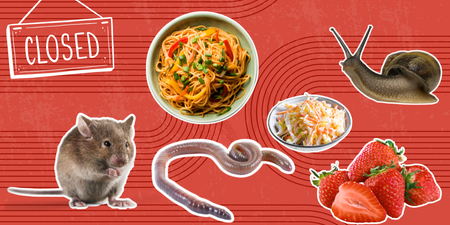If you’ve just found out you’re lactose intolerant, it can be easy to focus on the negatives.
It’s hard not to, as there can be a lot of confusion and misunderstanding surrounding the condition, like that it can be tricky to manage or that you’ll have to go without some of your favourite foods.
So, with that in mind, we’re debunking some of the most common myths surrounding lactose intolerance to help you learn a bit more about the condition…
Myth #1: Lactose intolerance is the same thing as a dairy allergy
This is FALSE! They are sometimes confused but are actually two very different conditions.
Lactose is the naturally occurring sugar found in milk and other products containing milk. Most of us have an enzyme in our body called lactase which breaks down lactose. Lactose intolerance is usually caused when the body is lacking this enzyme, so it can’t break down lactose, and this can result in some unpleasant symptoms.
A dairy allergy is an abnormal response by the body’s immune system to one or more of the proteins contained in cow’s milk. This can result in a serious allergic reaction and very different symptoms to lactose intolerance, such as vomiting, wheezing or hives.

Myth #2: You have to avoid all dairy
Not necessarily!
Lactose intolerance can affect people in different ways, but typically you won’t have to cut out all dairy.
For those who are lactose intolerant, the amount of lactose you can digest, can vary from person to person. It’s also worth noting that some dairy products contain less lactose than others. For example, hard cheese, butter and yoghurt typically contain quite low levels of lactose. Some people also find that eating foods with lactose as part of a meal, rather than on its own, can help avoid symptoms.
If you’ve been diagnosed as lactose intolerant, you may need to go through a trial and error process to figure out how much lactose you can tolerate, but it’s worth doing this, so you can better manage your symptoms and don’t cut out all lactose unnecessarily.

Myth #3: Everyone with lactose intolerance will have the same symptoms
Not necessarily true! Common symptoms of lactose intolerance include bloating, cramps, nausea, excess wind and diarrhoea, but not everyone will experience all of these symptoms, and the symptoms can vary in severity.
It’s important to note that the symptoms of lactose intolerance are similar to those of other conditions, so if you are experiencing these symptoms you should speak to your GP for a confirmed diagnosis, rather than assuming its lactose intolerance.

Myth #4: Lactose intolerance is difficult to manage
It doesn’t have to be! While the symptoms can be uncomfortable at times, there are ways to manage the condition. Once you’ve established how much lactose you can tolerate, you’ll be better able to manage your own symptoms.
Plus, you can find some tasty lactose-free alternatives in most major supermarkets now, so you won’t necessarily have to forego your favourite foods if you are lactose intolerant.
Avonmore Lactose Free milk is one example of a great option for anyone who loves milk but is lactose intolerant. It’s made from regular cow’s milk but has the added enzyme lactase, which breaks down the lactose in milk and helps avoid the unpleasant symptoms of lactose intolerance.
So, if you’re lactose intolerant, you can still enjoy the great taste of milk and all the nutritional benefits that come with it, just without the lactose!

Myth #5: I can get my calcium from other foods.
While you can get calcium from other food sources such as dark leafy greens, salmon and tofu, it can be quite difficult to get an adequate amount. For example, you would need to eat roughly 16 servings of broccoli a day to get your recommended daily amount of calcium. That’s why it’s so important to visit your GP if you’re experiencing any of the symptoms of lactose intolerance, to get a confirmed diagnosis and to ensure you’re not cutting out dairy unnecessarily.
Your GP, a dietician or nutritionist will be able to give you the advice to ensure you’re not missing out on any important minerals or nutrients from your diet.

Avonmore Lactose Free milk – enjoy the taste and goodness of regular milk, without the lactose. Feels Good, Tastes Great! Find out more about Avonmore Lactose Free Milk HERE.














































